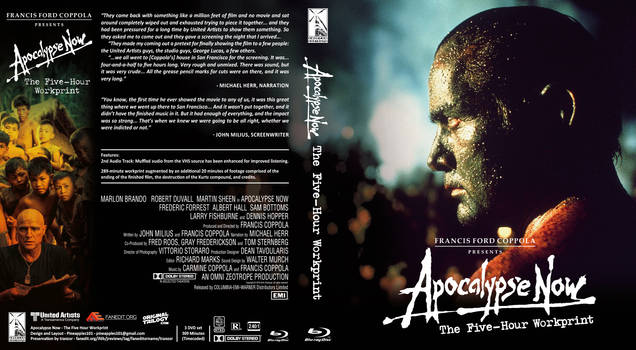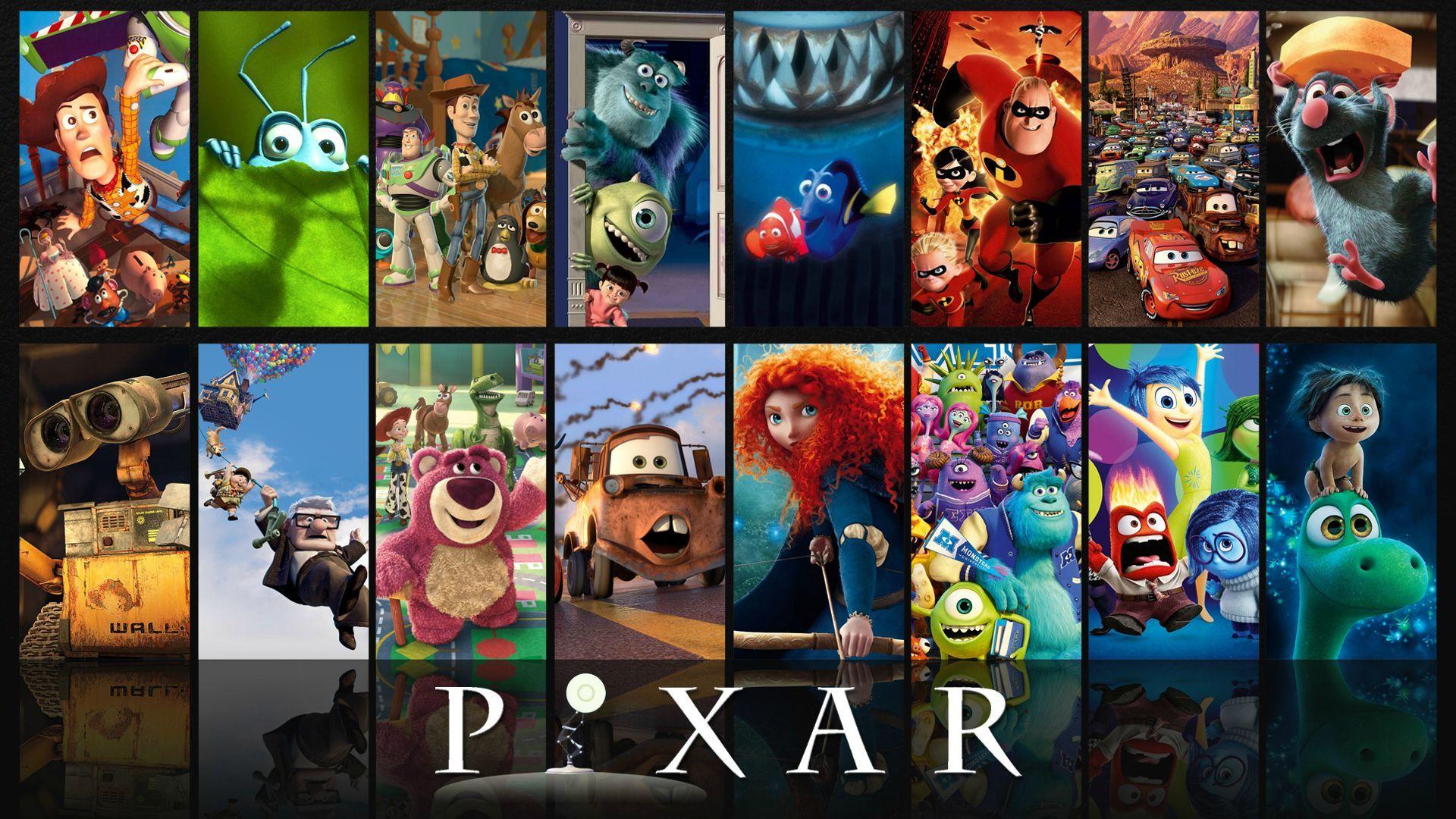
The 1970s stand as a monumental epoch in cinematic history, a decade where filmmakers dared to challenge conventions, delve into complex human experiences, and fundamentally redefine the art of storytelling. It was a period marked by audacious directorial visions and narratives that resonated deeply with audiences, laying the groundwork for many of the filmmaking techniques we still admire today. This era truly saw cinema find its voice, proving that directors and writers weren’t afraid to take risks, and that a powerful plot was always king. Each scene, every line of dialogue, served a greater purpose in these meticulously crafted narratives.
From gritty urban dramas to profound explorations of the human psyche, the films of the ’70s delivered not only critical acclaim but also unprecedented box office success. They captured the cultural zeitgeist, reflecting anxieties, hopes, and societal shifts, while simultaneously entertaining millions worldwide. These movies weren’t just fleeting diversions; they were cultural phenomena that sparked conversations, inspired future generations of artists, and left an indelible mark on the landscape of popular culture.
In this comprehensive retrospective, we embark on a journey through 11 of the most iconic films from the 1970s, celebrating those that achieved an unparalleled mastery of storytelling while also dominating the box office. These are the movies that demonstrated how compelling narratives, combined with powerful performances and visionary direction, could captivate audiences and achieve lasting cultural significance. Let’s explore the first six masterpieces that exemplify the decade’s groundbreaking cinematic achievements.
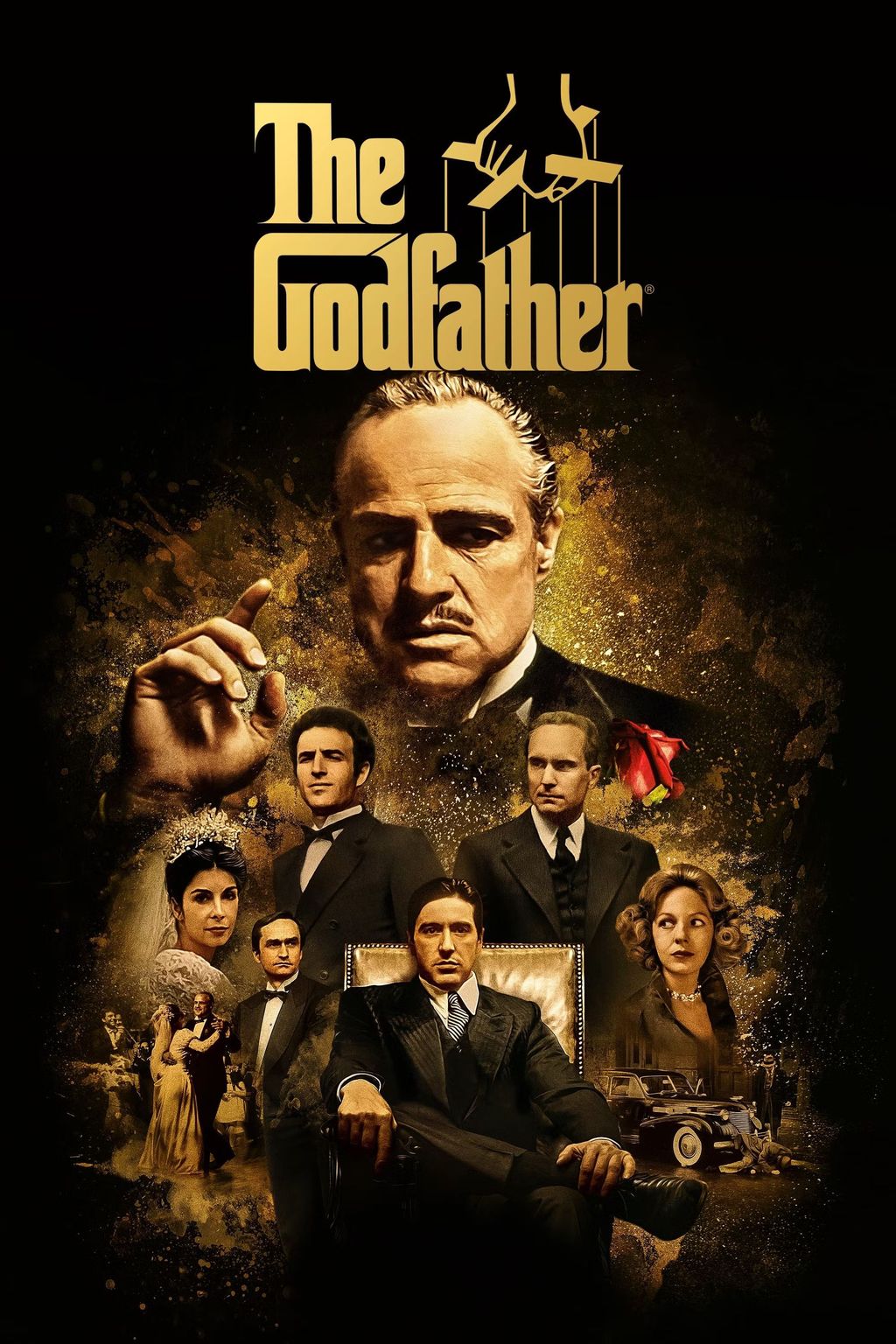
1. **The Godfather (1972)**
Francis Ford Coppola’s adaptation of Mario Puzo’s novel, “The Godfather,” isn’t just a crime drama; it’s a profound exploration of family, power, and loyalty, masterfully translated from book to screen. The film meticulously charts the intricate dynamics of the Corleone family, transforming Puzo’s story into something even more powerful and resonant on screen. Its deliberate pacing allows the epic narrative to unfold like a grand novel, ensuring that every scene and line of dialogue contributes meaningfully to the overarching story.
Marlon Brando’s portrayal of Don Vito Corleone, the family’s powerful patriarch, became instantly iconic, characterized by his quiet intensity and raspy voice. Al Pacino, then a rising talent, delivered a transformative performance as Michael, Vito’s youngest son, whose gradual descent into the family business forms the tragic core of the narrative. This complex character development makes it impossible not to empathize with them, even as they commit heinous acts, highlighting the film’s nuanced approach to morality.
Beyond its critical accolades, including the Academy Award for Best Picture, “The Godfather” also proved to be a massive commercial success, earning between $250 and $291 million at the box office. It was more than a gangster movie; it was a complex narrative about the dark side of the American Dream, influencing countless films and cementing its place as one of cinema’s most enduring achievements. Its intricate plot, unforgettable characters, and timeless themes continue to be studied and admired.
Read more about: Unbelievable Encounters: 10 Mind-Boggling Coincidences That Rocked Film Sets
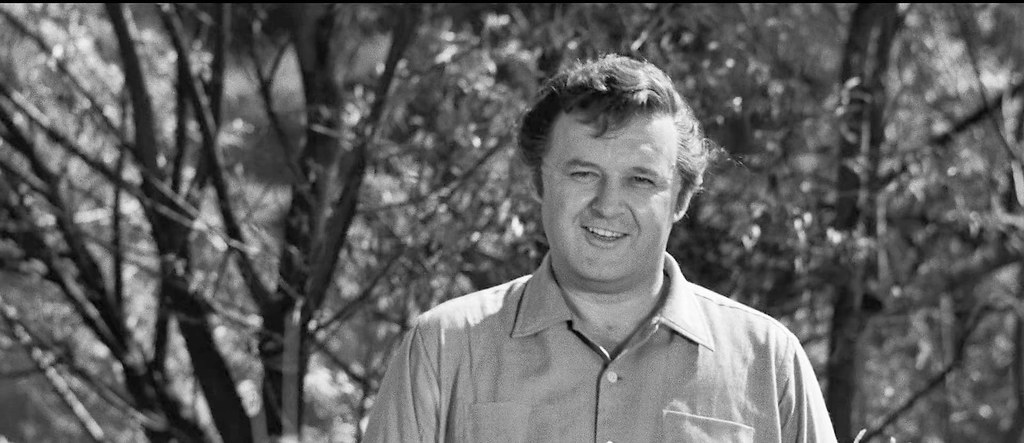
2. **Network (1976)**
Sidney Lumet’s “Network” remains startlingly relevant even decades after its release, serving as a scathing satire and prescient warning about the ruthless exploitation of media for ratings. The film dissects the lengths to which television networks will go to capture audience attention, a theme that resonates powerfully with contemporary media landscapes. Its narrative follows a veteran news anchor, Howard Beale, who experiences a mental breakdown live on air.
This breakdown, surprisingly, leads to a phenomenal surge in ratings, which the network, driven by the ambitious Diana Christensen, shamelessly exploits. The film brilliantly skewers the commercialization of news, portraying a world where authenticity and journalistic integrity are sacrificed at the altar of entertainment and profit. Its narrative is both a sharp critique of the media industry and a chilling prophecy of its potential future.
“Network” is a masterclass in storytelling that uses exaggerated circumstances to expose uncomfortable truths about society’s consumption of media. The powerful dialogue, particularly Beale’s iconic declaration, “I’m as mad as hell, and I’m not going to take this anymore!” became a rallying cry. The film’s enduring power lies in its unblinking examination of how far the media will go, making it a powerful and unsettling watch that reflects timeless storytelling.
Read more about: Blast from the Past: 8’70s TV Shows That Networks Mysteriously Stopped Rerunning (But Should Totally Bring Back!)

3. **One Flew Over the Cuckoo’s Nest (1975)**
Milos Forman’s acclaimed adaptation of Ken Kesey’s novel, “One Flew Over the Cuckoo’s Nest,” stands as a monumental cinematic achievement, delving deep into the struggles of individuality versus conformity within the confines of a mental institution. The film masterfully explores the human spirit’s resilience when faced with oppressive systems. It presents a captivating narrative that critiques authority and celebrates the defiant pursuit of personal freedom.
The unforgettable performance by Jack Nicholson as Randle McMurphy, a rebellious inmate who feigns insanity to avoid prison labor, drives the film’s narrative. His electrifying presence and charisma make him a natural leader among the patients, constantly challenging the cold, authoritarian rule of Nurse Ratched. Their clash forms the emotional and philosophical backbone of the story, symbolizing the eternal struggle against oppressive control.
Rather than painting its characters in simplistic black and white, the film explores the complex interplay of power, control, and the human spirit with profound nuance. It forces viewers to confront uncomfortable questions about sanity, freedom, and the true meaning of institutional care. “One Flew Over the Cuckoo’s Nest” is a powerful testament to storytelling that delves into the intricacies of human nature and societal structures, earning it numerous accolades, including the Academy Award for Best Picture.
Read more about: The Architects of an Era: 6 Directors Who Mastered 70s Storytelling and Forever Changed Cinema
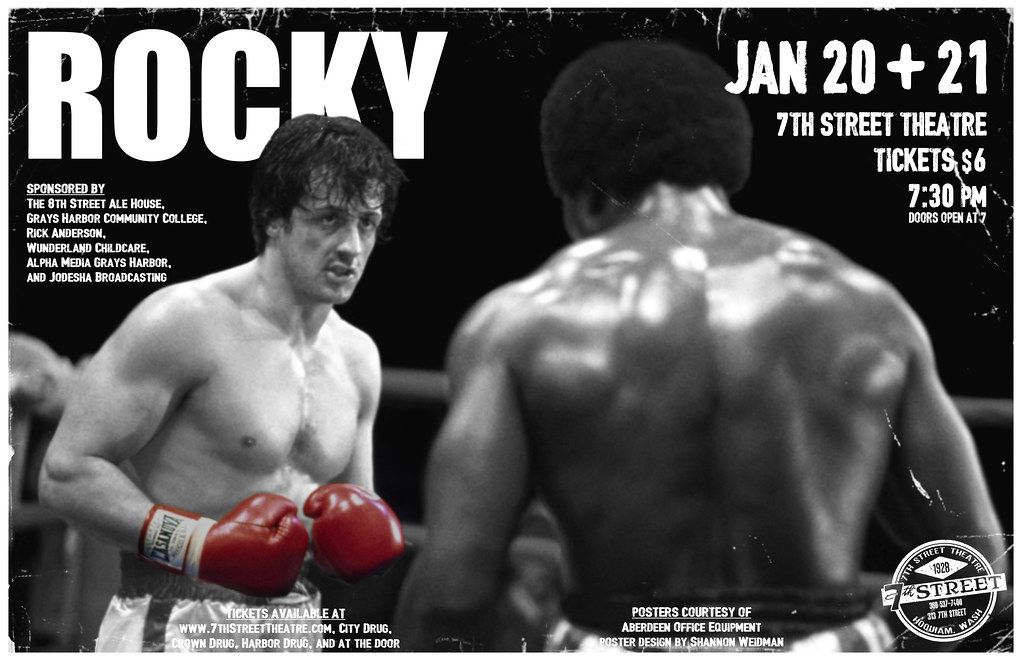
4. **Rocky (1976)**
“Rocky” transcends the boxing genre, emerging as a quintessential tale of determination, resilience, and the relentless pursuit of the American Dream. Sylvester Stallone’s heartfelt creation, a story he not only starred in but also wrote, captured the hearts of audiences worldwide with its raw emotion and inspiring narrative. It’s an underdog story that defines an era, proving that sometimes, simply going the distance is a victory in itself.
The film chronicles Rocky Balboa’s journey from a small-time club fighter in the gritty streets of Philadelphia to an improbable contender for the world heavyweight title. This narrative arc resonated deeply with anyone who has ever faced seemingly impossible odds, making Rocky a universal symbol of perseverance. Stallone’s performance is nothing short of iconic, imbuing Rocky with a vulnerability and earnestness that made him instantly relatable.
“Rocky’s” raw, emotional storytelling, coupled with its memorable training montages and rousing score, propelled it to unexpected critical and commercial success. It wasn’t just a sports movie; it was a powerful drama about self-belief, love, and the courage to chase a dream against all odds. The film earned the Academy Award for Best Picture, demonstrating the immense impact of a well-told story on the cultural landscape and its ability to inspire generations.
Read more about: Beyond the Bell: Remembering 12 Iconic Rocky Performers Who Left Us Too Soon
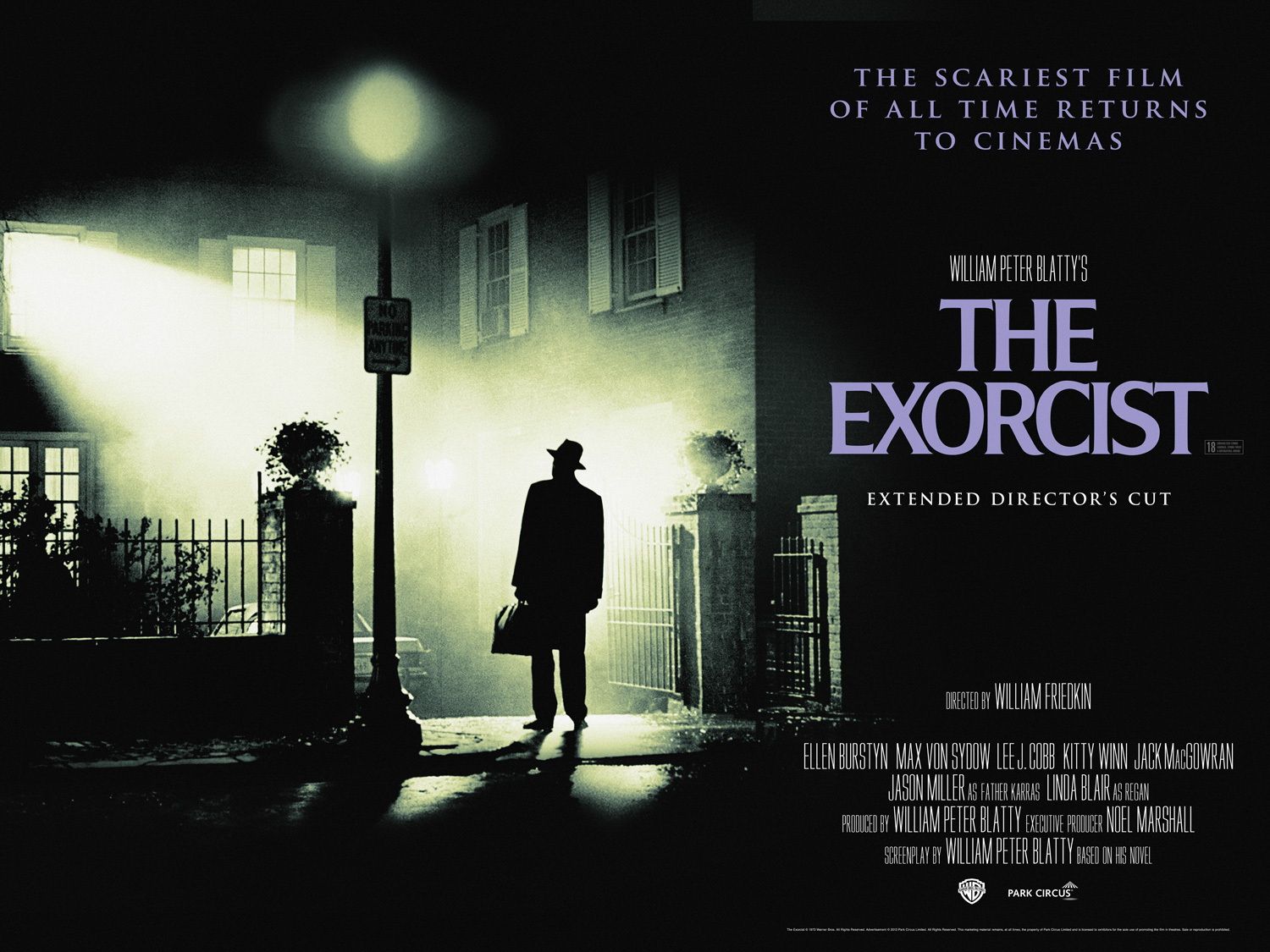
5. **The Exorcist (1973)**
“The Exorcist” is widely hailed as one of the scariest films ever made, yet its true genius lies not just in its terror, but in its masterclass in storytelling. Directed by William Friedkin from William Peter Blatty’s screenplay based on his own novel, the film crafts a narrative that unfolds slowly, allowing an almost unbearable sense of dread to build gradually. This meticulous pacing is key to its enduring power, making the horror deeply psychological before it becomes overtly supernatural.
The story centers on Regan, a young girl whose increasingly disturbing behavior escalates into a full-blown demonic possession, shocking audiences with its terrifying portrayal. The film’s ability to ground its horror in the personal struggles of its characters, particularly the two priests called to perform the exorcism, Fathers Damien Karras and Lankester Merrin, provides a powerful emotional core. Their personal crises and struggles with faith add layers of depth to the supernatural conflict.
“The Exorcist” was an instant horror sensation, earning a staggering $428 million worldwide and over $230 million domestically against a modest $12 million budget, making it the third highest-grossing film of the 70s. Its shocking content—head-spinning, projectile vomiting, and chilling supernatural occurrences—left an indelible mark. Even today, 50 years after its release, “The Exorcist” continues to be regarded as one of the greatest horror films ever made, maintaining its profound power to terrify and provoke.
Read more about: Hollywood’s Seismic Shifts: 11 Films That Didn’t Just Make History, They Rewrote the Entire Movie Rulebook

6. **Jaws (1975)**
Steven Spielberg’s “Jaws” didn’t just become one of the highest-grossing movies of the 70s; it effectively birthed the modern summer blockbuster, forever changing Hollywood’s approach to movie releases and marketing. Audiences were utterly captivated by its perfect blend of horror, action, and suspense, making it a cultural touchstone that defined a generation’s fear of the ocean. The film proved that a truly terrifying story could also be an exhilarating cinematic experience.
The narrative follows Police Chief Brody, oceanographer Hooper (Richard Dreyfuss), and the grizzled shark hunter Quint (Robert Shaw) as they hunt a relentless, massive great white shark terrorizing the small New England town of Amity Island. Spielberg’s skillful use of pacing, combined with John Williams’ iconic, dread-inducing score, created a sense of terror that lingered long after the movie ended, keeping audiences on edge even when the shark wasn’t explicitly on screen. Instead of relying on gratuitous gore, this timeless thriller taps directly into primal fears.
“Jaws” was an incredible box office phenomenon, earning an astonishing $476 million worldwide. The film had it all: white-knuckle tension, instantly memorable characters, and groundbreaking (for its time) special effects that brought the mechanical shark to terrifying life. Its success demonstrated that thoughtful, character-driven storytelling could be combined with commercial spectacle to create an experience that audiences would flock to see repeatedly. It remains a benchmark for suspense and a testament to Spielberg’s early mastery of cinematic craft.
Read more about: Behind the Screen: 11 Iconic Movie Sets That Were Total Nightmares for Cast and Crew
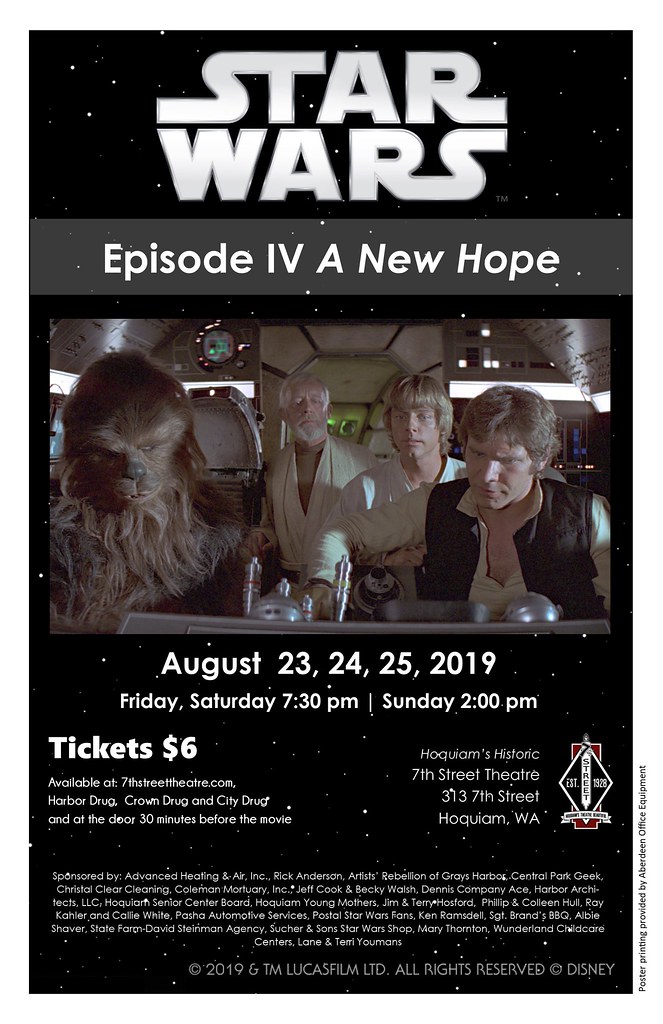
7. **Star Wars: Episode IV – A New Hope (1977)**
George Lucas’s “Star Wars” isn’t just a movie; it is an epoch-making cultural phenomenon that fundamentally revolutionized the science fiction genre, reshaping cinematic storytelling and setting new benchmarks for visual spectacle. The film expertly blends archetypal elements of adventure, fantasy, and space opera, transporting audiences to a galaxy far, far away where a timeless struggle between good and evil unfolds with thrilling intensity. This imaginative universe, brimming with memorable characters and alien worlds, instantly captivated a global audience, proving the immense power of expansive narrative.
At its core, “Star Wars” delivers a profoundly relatable hero’s journey through the character development of Luke Skywalker. We watch as he transforms from a humble farm boy on Tatooine into a pivotal hero for the Rebel Alliance, a narrative arc that resonates deeply with themes of destiny and self-discovery. This engaging personal quest, set against a backdrop of galactic civil war, provides a potent emotional anchor, drawing viewers into its grand narrative.
Further enhancing its enduring appeal is John Williams’s iconic and instantly recognizable score. His compositions are more than mere background music; they are an integral part of the storytelling, evoking heroism, dread, and wonder with equal measure, and solidifying the film’s emotional impact. The score itself became a cultural touchstone, inseparable from the cinematic experience and profoundly influencing future film compositions.
“Star Wars: Episode IV – A New Hope” was a colossal box office success, establishing a new blueprint for what a blockbuster could be and forever changing Hollywood’s approach to large-scale productions. Its groundbreaking special effects, which brought spaceships and alien creatures to vivid life, alongside instantly iconic characters like Darth Vader, Princess Leia, and Han Solo, ensured its place not just in film history, but in global consciousness. The film’s narrative brilliance lies in its ability to marry technological innovation with a universally appealing story of heroism and destiny, confirming its status as an unparalleled storytelling master and a definitive film of the 1970s.
Read more about: Honestly, What Happened To Them? 15 Iconic Special Effects From Old Films That We Forgot Still Astound Us.
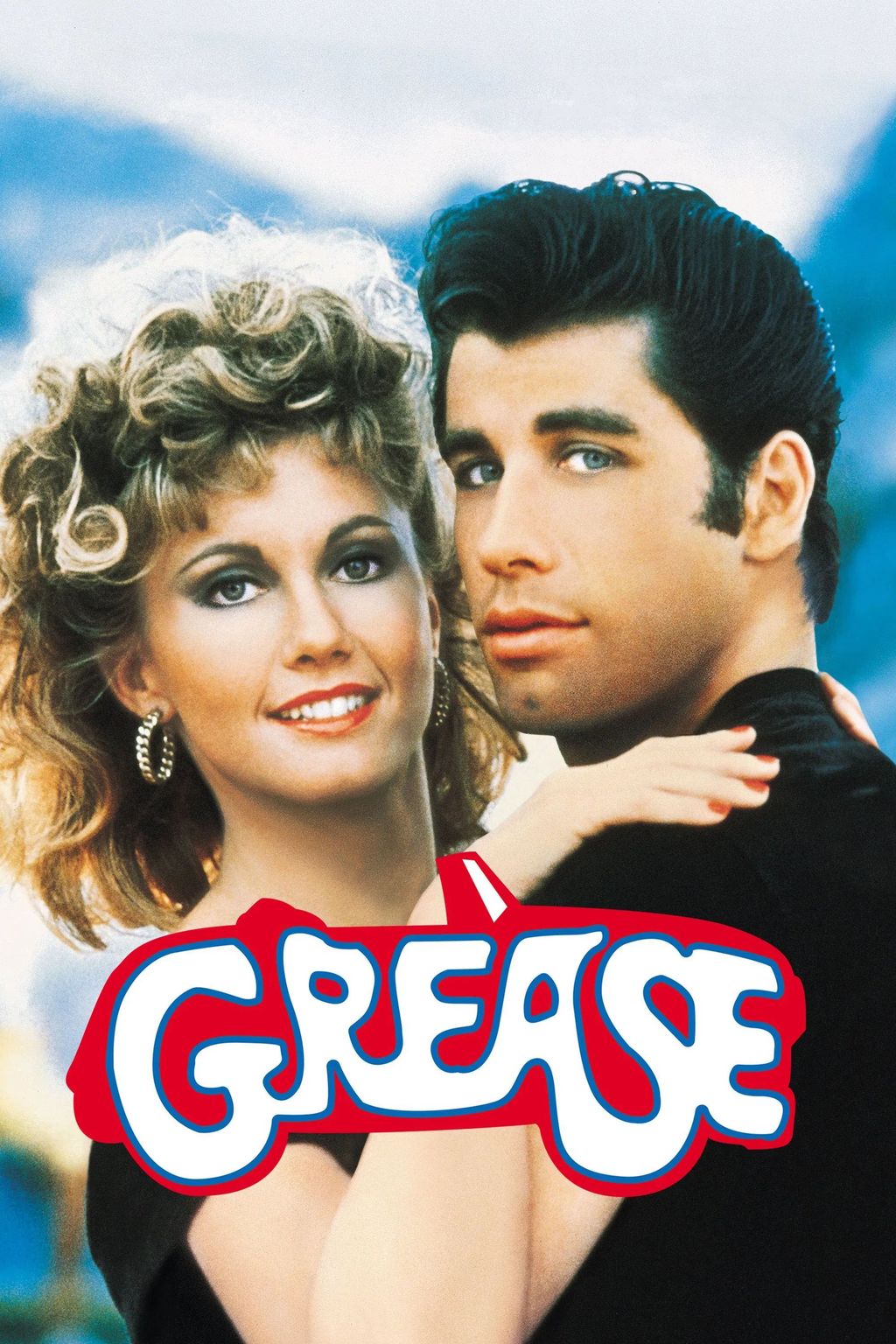
8. **Grease (1978)**
The 1978 phenomenon “Grease” instantly captivated audiences worldwide, earning their “hopelessly devoted” admiration with its infectious soundtrack, charismatic cast, and vibrant portrayal of 1950s youth culture. Starring the iconic duo of John Travolta and Olivia Newton-John as the slick Danny Zuko and the sweet Sandy Olsson, the film effortlessly transported viewers back to Rydell High, brimming with high school romances, memorable dance numbers, and a genuine sense of youthful exuberance and angst. Its boundless energy and nostalgic charm were, and remain, absolutely undeniable.
Beyond its engaging performances and dynamic choreography, “Grease” was a massive global commercial success, grossing an impressive $366 million worldwide. This financial triumph underscored its widespread appeal and its ability to connect with diverse audiences through its universal themes of love, friendship, and self-discovery. The film became a quintessential cinematic experience for the generation that grew up with it, and continues to be rediscovered by new viewers.
The accompanying soundtrack album was equally dominant, topping charts across the globe and solidifying hits like “You’re the One That I Want,” “Summer Nights,” and “Greased Lightnin’” as karaoke staples and enduring pop culture anthems for decades. These songs became inextricably linked to the film’s vibrant narrative, enhancing its feel-good atmosphere and contributing significantly to its lasting cultural footprint, making it more than just a movie, but an immersive musical experience.
The film’s enduring popularity extends far beyond its initial release, having led to countless stage revivals, a cinematic sequel, and cementing its status as the ultimate feel-good musical of the 1970s. “Grease” is a vibrant testament to how a well-crafted musical narrative, filled with catchy tunes, relatable characters, and a dash of rebellious spirit, can not only achieve monumental box office success but also leave an indelible, joyous mark on popular culture, proving that sometimes, you just need to sing and dance your way through life’s challenges.
Read more about: Popular Films That Will Make You Shout ‘Wait, That’s It’ After Their Truly Terrible Endings
9. **Apocalypse Now (1979)**
Francis Ford Coppola’s “Apocalypse Now” offers an intense, hallucinatory, and profoundly visceral portrayal of the Vietnam War, venturing far beyond mere battle scenes to delve into the profound psychological and moral decay inflicted by conflict. Coppola masterfully reimagines Joseph Conrad’s classic novella “Heart of Darkness,” transplanting its themes of madness, colonial depravity, and the inherent darkness of humanity into the chaotic, war-torn landscape of Vietnam. It stands as a monumental cinematic journey into the deepest, most unsettling corners of the human psyche.
The film’s compelling and psychologically complex story follows Captain Willard, portrayed with a haunting detachment by Martin Sheen, who is tasked with a perilous and morally ambiguous mission: to assassinate Colonel Walter E. Kurtz. Kurtz, a brilliant yet rogue Green Beret officer played by the enigmatic Marlon Brando, has seemingly gone insane, establishing his own dominion deep within the jungle. His descent into madness serves as a chilling mirror, reflecting the inherent darkness that lurks within every soldier and, by extension, the madness of war itself.
The narrative structure of “Apocalypse Now,” presented as a slow, agonizing river journey deep into enemy territory, expertly amplifies the sense of existential dread, moral ambiguity, and the gradual erosion of sanity. As Willard travels further upriver, the boundaries between civilization and savagery blur, and the atrocities committed in the name of war become increasingly inescapable, making for an unsettling, immersive experience that questions the very nature of humanity.
“Apocalypse Now” stands as an audacious achievement in storytelling, challenging viewers to confront uncomfortable truths about military conflict, the human condition, and the breakdown of societal order. Its visionary directorial craft, combined with unforgettable performances from its stellar cast and stunning, often surreal, cinematography, created a cinematic experience unlike any other. The film’s deep thematic resonance and powerful, unflinching narrative make it a cornerstone of 1970s cinema, with its enduring critical stature cementing its profound impact and position as a masterwork, regardless of specific box office numbers mentioned in the context.
Read more about: Behind the Screen: 11 Iconic Movie Sets That Were Total Nightmares for Cast and Crew
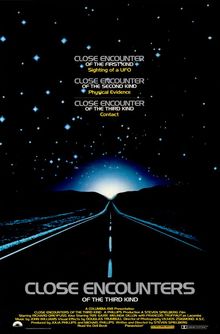
10. **Close Encounters of the Third Kind (1977)**
Steven Spielberg’s “Close Encounters of the Third Kind” is a landmark science fiction classic that mesmerized audiences with its masterful blend of mystery, wonder, and truly groundbreaking special effects, setting a new standard for cinematic portrayals of extraterrestrial life. The film transcends typical alien invasion narratives, instead offering a deeply human narrative steeped in the awe, curiosity, and psychological impact of first contact, creating an atmosphere of profound anticipation and universal hope. It’s a story that brilliantly taps into humanity’s primal urge to connect with the unknown and explore the vastness of the cosmos.
The film uniquely centers on Roy Neary, an ordinary blue-collar worker portrayed with relatable earnestness by Richard Dreyfuss, whose life is irrevocably altered after a close encounter with a UFO. His subsequent obsessive pursuit of a mysterious mountain, driven by an unexplainable compulsion, forms the emotional heart of the narrative. This intensely personal quest, shared by other “experiencers,” cleverly mirrors a universal yearning for understanding and a profound sense of shared destiny. Spielberg’s direction ensured that the story felt grounded and emotionally resonant, even as it ventured into the fantastical.
“Close Encounters of the Third Kind” proved to be a significant box office phenomenon, earning an impressive $306.8 million worldwide. This commercial triumph showcased that thoughtful, visually stunning science fiction could also be incredibly profitable, paving the way for more ambitious genre films. The film’s innovative use of light and sound, especially the magnificent Mothership and the iconic five-note alien musical sequence, which became instantly recognizable, deeply embedded itself in collective consciousness and set new standards for cinematic spectacle.
The cultural impact of “Close Encounters” was immense, resonating with audiences and critics alike, and earning the film numerous prestigious awards, including an Academy Award for Vilmos Zsigmond’s breathtaking cinematography. Spielberg’s visionary approach to depicting extraterrestrial contact—not as invasion, but as a moment of profound, shared experience—cemented its legacy as a trailblazing sci-fi epic. It remains a powerful testament to the allure of the unknown and the enduring human desire for connection, proving its mastery of evocative storytelling.
Read more about: Honestly, What Happened To Them? 15 Iconic Special Effects From Old Films That We Forgot Still Astound Us.
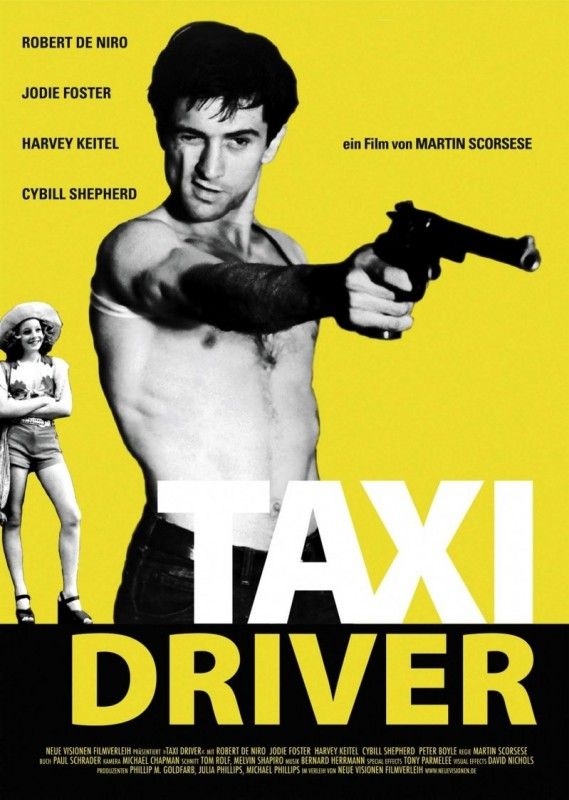
11. **Taxi Driver (1976)**
Martin Scorsese’s “Taxi Driver” stands as a raw, unflinching, and ultimately unsettling exposé of the seedy underbelly of New York City in the 1970s, establishing itself as a seminal work in urban alienation cinema. The film’s gritty realism, combined with Bernard Herrmann’s haunting and melancholic jazz-infused score, keeps audiences perpetually on edge, drawing them into the claustrophobic and increasingly disturbed world of its protagonist. It is a masterclass in psychological storytelling, presenting a character study of unsettling depth and societal critique.
The narrative meticulously chronicles Travis Bickle’s descent into madness, a disillusioned and insomniac Vietnam veteran working as a nocturnal taxi driver. His profound isolation, coupled with a growing disgust with the moral decay he perceives around him—from prostitution to crime—festers into a dangerous obsession. This internal turmoil fuels his disturbing vigilante fantasies, painting a bleak picture of a man teetering on the brink of violent explosion.
Robert De Niro’s electrifying and iconic portrayal of Bickle is central to the film’s power, embodying the character’s psychological fragmentation and unsettling charisma. His performance is a chilling deep dive into a troubled psyche, making Bickle one of cinema’s most complex and memorable anti-heroes. Scorsese’s directorial precision ensures that each frame is charged with palpable tension, making Bickle’s internal struggle and urban alienation almost physically felt by the viewer.
“Taxi Driver” culminates in a violent climax that is both shocking and tragically inevitable, offering no easy answers but rather a stark reflection on societal ills and individual pathology. The film, a powerful drama about self-belief, love, and the courage to chase a dream against all odds, proved the immense impact of a well-told story on the cultural landscape and its ability to inspire generations. Its enduring influence on cinema, its unblinking portrayal of urban despair, and its exploration of the darker facets of the American Dream make it a significant, genre-defining contribution to the storytelling landscape of the 1970s, challenging viewers to confront uncomfortable reflections of society and the human condition.
***
Read more about: Beyond the Lens: The Visionary Directors Who Redefined Cinema Through Innovation and Artistry
These additional five films truly underscore the boundless creativity, audacious vision, and narrative courage that defined 1970s cinema. From the galactic adventures that launched an entire cinematic universe and redefined sci-fi, to the vibrant musicals that made us dance and explored youthful dreams, and the gritty, profound dramas that held a unflinching mirror to society’s darker corners and the human psyche, these movies didn’t just tell stories; they crafted indelible experiences. They pushed artistic boundaries, captured the cultural zeitgeist with remarkable foresight, and emphatically proved that powerful storytelling—whether through epic scale, intimate character study, or musical spectacle—could not only enthrall audiences but also achieve monumental box office success. The 1970s truly were a golden age, leaving behind a legacy of films that continue to inspire, provoke, and entertain, reminding us that a great story, powerfully told, will always find its way into our hearts, our history, and the very fabric of our shared culture.

